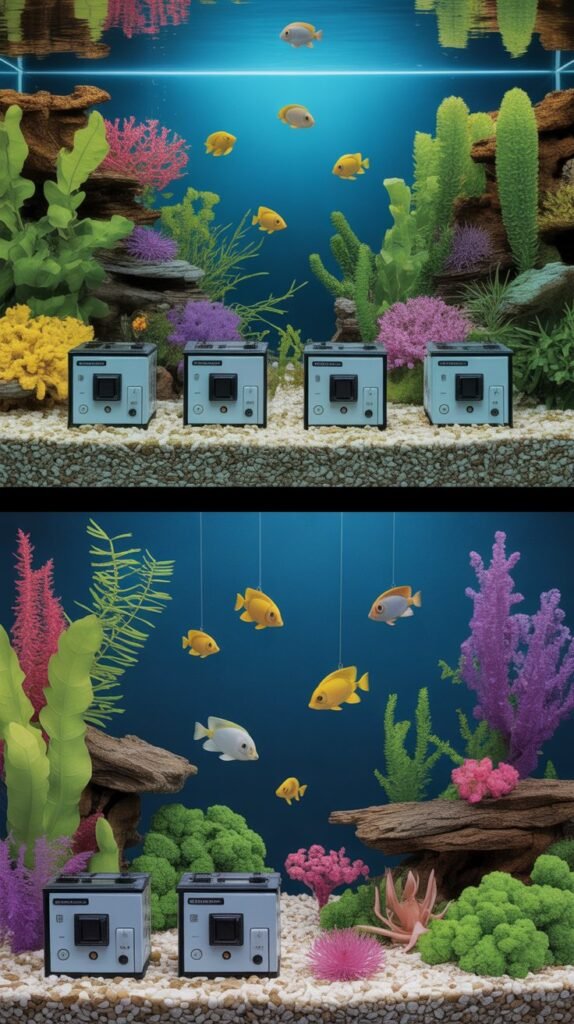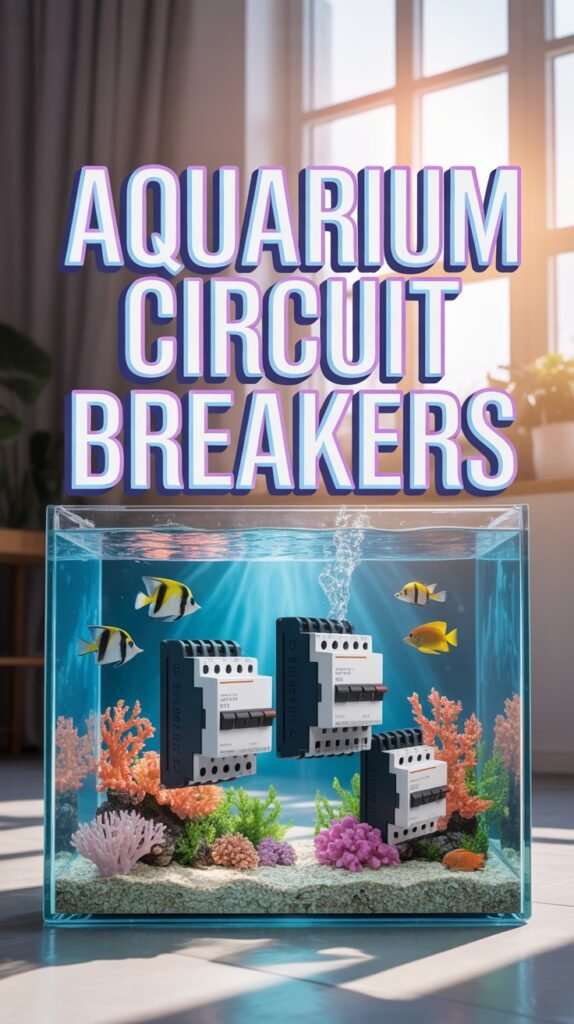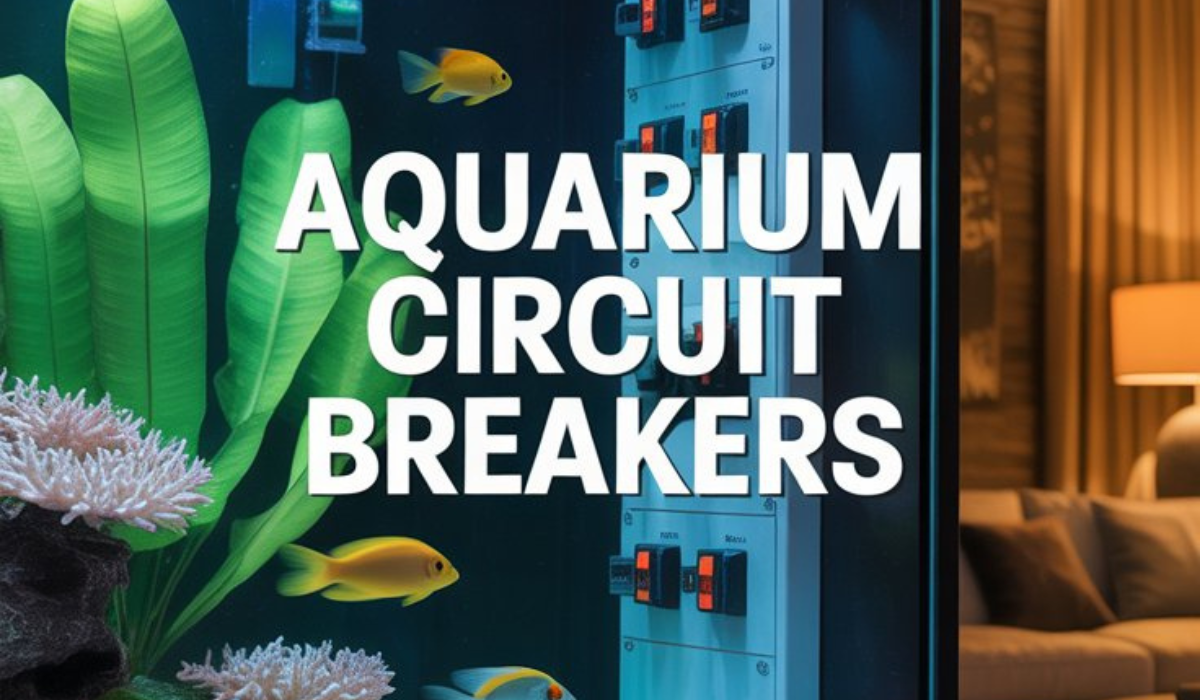Maintaining a healthy and safe aquarium requires more than clean water, reliable filtration, and good lighting. One of the most important yet often overlooked components of aquarium safety is the electrical protection system, especially the use of circuit breakers. Because aquariums rely heavily on electrical equipment such as heaters, filters, air pumps, and lights, ensuring protection against electrical hazards is essential. That is why circuit breakers in aquariums play a vital role in preventing shocks, fires, and equipment failure.
In this comprehensive guide, you’ll learn what circuit breakers are, why aquariums need them, what types are used, and how to choose, install, and maintain them properly. This long-form article is written for aquarium hobbyists, beginners, advanced aquarists, and anyone working with aquatic systems at home or in commercial environments.
What Are Circuit Breakers in Aquariums?
A circuit breaker is an electrical safety switch that automatically shuts off power when it detects an overload, short circuit, or electrical fault. In aquariums, they are used to protect both the aquarist and electrical equipment, especially in environments where water and electricity are used together—an inherently risky combination.
A circuit breaker reacts instantly to dangerous electrical conditions such as:
- Overloaded circuits
- Equipment failure
- Water-induced short circuits
- Ground faults
- Dangerous current leaks
Once the breaker detects an issue, it “trips,” cutting off electricity to prevent accidents.
Unlike a fuse, which burns out and must be replaced, a breaker is resettable and reusable.
Why Circuit Breakers Are Essential for Aquariums

Aquarium setups can include multiple electrical devices running 24/7. Any malfunction can be hazardous if there is no protective mechanism.
Here’s why circuit breakers are vital in aquarium setups:
1. Prevents Electrical Fires
A heater malfunction, damaged wire, or water contact can cause overheating. Without a breaker, this can lead to fire. A circuit breaker trips immediately, stopping the flow of electricity before it becomes dangerous.
2. Protects Aquatic Life
Fish, corals, shrimp, and living organisms are sensitive to electrical disturbances. Current leaks into the water can cause:
- Stress
- Erratic behavior
- Burns
- Death
A circuit breaker combined with the right protection device shields your aquarium inhabitants.
3. Protects Expensive Aquarium Equipment
Most aquarium electronics operate continuously. Faults can damage:
- Aquarium heaters
- Canister filters
- Powerheads
- Protein skimmers
- LED aquarium lights
- UV sterilizers
- Air pumps
Circuit breakers stop power before damage spreads.
4. Prevents Electric Shock to the Aquarist
If a device falls into the water or a wire is exposed, electrical shock is a real risk. A properly installed GFCI/GFCB (Ground Fault Circuit Breaker) will instantly shut off power, preventing injury.
5. Ensures Continuous Safe Operation
Breakers help maintain a stable and reliable aquarium system by avoiding interruptions caused by electrical issues.
Types of Circuit Breakers Used in Aquariums
Not all circuit breakers are equal. Some offer basic overload protection, while others provide advanced safety against moisture-related faults.
Here are the most important types for aquarium setups:
1. Standard Circuit Breaker (MCB)
Miniature Circuit Breakers (MCBs) protect against overloads and short circuits. They are commonly installed in homes and can safeguard aquarium equipment from drawing too much power.
Ideal for:
- General protection
- Preventing overloading from multiple devices
2. GFCI Circuit Breaker (Ground Fault Circuit Interrupter)
Also called RCD or GFI breakers, these are the most important breakers for aquariums.
A GFCI breaker detects leakage currents (even tiny ones) and cuts power instantly if electricity flows where it shouldn’t—such as water.
Ideal for:
- Aquariums of any size
- Preventing electric shock
- Protecting from water-related faults
This is the #1 recommended type for aquarium use.
3. AFCI Circuit Breaker (Arc Fault Circuit Interrupter)
AFCI breakers protect against electrical arcs caused by damaged wires or loose connections.
Arcing can lead to fires, especially near aquarium stands, cabinets, and wood furniture.
Ideal for:
- Aquarium cabinets with multiple cables
- Preventing electrical fires
4. Combination GFCI/AFCI Breaker
This dual breaker protects against both ground faults and arc faults.
For large aquarium systems with heavy equipment, this is an excellent choice.
Ideal for:
- Reef tanks
- Commercial fish rooms
- Aquariums with complex wiring setups
5. Outdoor/Weatherproof Breakers
These breakers are used when the aquarium is placed outdoors, in a fish pond setup, or near humid environments. They prevent moisture from causing internal breaker damage.
Ideal for:
- Outdoor ponds
- Aquarium sump areas
- High humidity fish rooms
Electrical Equipment in Aquariums That Require Breaker Protection

Aquariums rely on a variety of electrical devices. Each one can be a potential hazard if not protected.
Here are the most common aquarium devices that require proper circuit breaker protection:
1. Aquarium Heaters
Heaters are the #1 cause of electrical issues in aquariums. They can crack, malfunction, or leak current into the water.
A GFCI breaker is essential to prevent shock.
2. Filters and Canister Filters
High-powered filters often run 24/7. If a motor seizes or gets wet, the breaker prevents overheating.
3. Aquarium Lights
LED lights, especially high-output reef lights, consume significant power. Faulty lights can overheat or short.
4. Air Pumps
Air pumps are usually near water and can easily splash, making breaker protection necessary.
5. Powerheads and Wave Makers
These underwater devices can leak electricity into the water column.
6. UV Sterilizers
Because UV units use strong bulbs and electricity, proper protection is essential.
7. Protein Skimmers
In saltwater aquariums, salt creep can cause electrical faults. Breakers protect skimmers from damage.
Why Standard Home Breakers Are Not Enough for Aquariums
While household breakers offer basic protection, they do not protect you from electrical shocks caused by water contact. For aquariums:
**Standard breakers only protect equipment.
GFCI breakers protect humans and fish.**
This is why aquarium hobbyists must install:
- GFCI outlets, or
- GFCI breakers, or
- GFCI power strips
Using a standard breaker alone is risky when working with water.
How to Choose the Right Circuit Breaker for Your Aquarium
Selecting a proper breaker ensures the ultimate safety of your aquarium.
Here’s what to consider:
1. Size of Your Aquarium
- Small aquariums (10–40 gallons): GFCI outlet or GFCI power strip
- Medium aquariums (55–100 gallons): GFCI breaker + AFCI recommended
- Large systems (125+ gallons): Dedicated circuit + combination GFCI/AFCI breaker
2. Total Electrical Load
Calculate the wattages of all your aquarium devices:
Heater + Filter + Lights + Pump + Accessories
= total power consumption
Select a breaker that comfortably handles the load without frequent tripping.
3. Risk Factor
If your aquarium is in an area with:
- High humidity
- Saltwater splashes
- Multiple cables
- Unprotected wiring
Then GFCI and AFCI protection is essential.
4. Indoor vs Outdoor Setup
For outdoor ponds or open aquariums, weatherproof breakers and enclosures are necessary.
5. Type of Water
Saltwater aquariums carry more electrical risk than freshwater tanks because saltwater conducts electricity more efficiently.
GFCI breakers are mandatory for saltwater setups.
How to Install Circuit Breakers for an Aquarium (Safety Tips)

Electrical installation should ideally be done by a professional electrician, especially when dealing with water environments.
Here are essential guidelines:
1. Use Dedicated Circuits
Large aquariums should have their own electrical circuit to avoid overload.
2. Install GFCI Protection
This is non-negotiable for aquarium safety.
3. Keep Power Strips Elevated
Never place power strips on the floor. Keep them mounted high to avoid water drips.
4. Create a “Drip Loop” for Each Cable
Ensure cables drop downward before going up to the outlet. This prevents water from running into electrical outlets.
5. Use Waterproof Covers
For sump or cabinet areas with high humidity.
6. Avoid Overloading Power Strips
Distribute devices across multiple outlets if needed.
7. Label Your Outlets
Label devices such as:
- Heater
- Filter
- Lights
- Skimmer
This makes troubleshooting easier.
Signs Your Aquarium Breaker Is Not Working Properly
A faulty breaker can put your aquarium and home at risk.
Watch for these signs:
- Breaker trips frequently
- Breaker does not trip even when a fault occurs
- Burning smell or discoloration
- Buzzing noise from the electrical panel
- Breaker becomes hot
- Equipment shuts off randomly
If you notice these issues, replace or repair immediately.
Common Mistakes Aquarists Make With Electrical Systems
❌ Using regular power strips
❌ No GFCI protection
❌ Overloading circuits
❌ Running cables without drip loops
❌ Placing electrical equipment under aquariums
❌ Using cheap, low-quality devices
❌ Ignoring breaker trips
Avoiding these mistakes ensures long-term aquarium safety.
Benefits of Using Proper Circuit Breakers in Aquariums
✔ Prevents fire hazards
✔ Protects fish and aquatic life
✔ Avoids electrocution
✔ Extends life of aquarium equipment
✔ Reduces maintenance costs
✔ Ensures stable tank operation
✔ Increases reliability for large reef systems
Without proper electrical protection, even a small aquarium can become a major hazard.
FAQs About Circuit Breakers for Aquariums
1. Why do aquariums need circuit breakers?
Because aquariums combine water and electricity, breakers prevent fires, shocks, and equipment failures.
2. What type of circuit breaker is best for aquariums?
A GFCI breaker is the best and most essential. For best protection, use a combination GFCI + AFCI breaker.
3. Can I use a normal power strip for my aquarium?
No. Use a GFCI-protected strip or outlet.
4. My breaker keeps tripping. What should I do?
Check for equipment overload, damaged devices, or water contact. If the issue persists, consult an electrician.
5. Is GFCI mandatory for saltwater aquariums?
Yes. Saltwater conducts electricity better and poses higher risks.
6. Can I install a GFCI breaker myself?
If you have electrical experience, you may, but it is strongly recommended to hire a licensed electrician.
7. Do aquarium heaters cause electrical problems?
Yes, heaters are one of the most common sources of electrical faults in aquariums.
8. How often should I check my electrical setup?
Check cables, outlets, and equipment every month and test GFCI breakers regularly.

